Transcending Boundaries: The Visionary Artistry of William Yong 楊漢源: 舞出新視野
ENGLISH 英 : Deirdre Kelly | CHINESE 中 : Maggie Ho
VENUE: Four Seasons Centre for the Performing Arts • ART DIRECTION: Deborah Lau-Yu
Photography: Lucia Graca Remedios • VIDEO PRODUCTION: Fête Chinoise Team
FASHION STYLING: Lisa Fang • Head of Wig & Make-up: Cori Ferguson
HEAD OF FRONT OF HOUSE: Aiden Nagle • HEAD OF WARDROBE: Amelia Taverner
DRESSER: Zoe Walton• SCULPTURE: McElcheran, William. Daedalus and Icarus. 1987, Bronze and Zodiaq cladding. Graciously donated to the Four Seasons Centre for the Performing Arts by DuPont Canada
COORDINATION: David Robitaille , Rachel McNamara, Rhonda Lam, Shanna Miller
As featured in Fête Chinoise Annual Book of INcredible People Edition 10: Thinking in Decades with exclusive online content
Canadian Opera Company at the Four Seasons Centre for the Performing Arts
Home of the Canadian Opera Company (COC), the Four Seasons Centre for the Performing Arts provides a unique and fitting environment for the photoshoot with William Story. Its modern design and intimate atmosphere create a space that feels both welcoming and deeply connected to the world of performance. The venue is known for bringing together diverse artistic expressions, making it the perfect backdrop to capture the essence of the shoot. It embodies the idea of the performing arts as a living, evolving form of expression.
As Canada’s largest opera producer and one of North America's leading companies, the COC is renowned for its artistic excellence and innovative productions. The company’s diverse repertoire includes new commissions, international collaborations, and performances by world-class artists, all of which reflect its commitment to pushing the boundaries of opera and advancing the art form.
In the rarefied realm of Canadian dance, few artists have forged as unconventional and boundary-obliterating a path as William Yong. The award-winning Chinese-Canadian choreographer and multimedia artist, who immigrated from Hong Kong to Toronto in the 1990s to reunite with his family after a decade in London, has melded his multicultural roots with an unbridled creative spirit, pioneering daringly innovative, interdisciplinary works that shatter artistic conventions. From his early experimental films and productions merging dance with technology to touring the world as an in-demand performer, Yong has continually pushed the limits of dance expression.
“With every piece I create,” he says, “I aim to invite the audience on a journey that transcends the ordinary. Each artwork opens a door for the viewer to explore the deeper, more profound dimensions of human existence and life itself.”
In 2024, Yong made history as the first Asian choreographer commissioned by the National Ballet of Canada to create an original mainstage work — a milestone representing greater diversity of voices being brought into mainstream performing venues. His UtopiVerse reinterprets philosophical ideas about utopian societies, drawing inspiration from sources such as the biblical Garden of Eden story, John Milton’s epic Paradise Lost, Charles Darwin’s theories on evolution and the multiverse concept proposed by Belgian physicist Thomas Hertog, who worked with Stephen Hawking on the idea of the universe being one of many separate worlds.
Red Metallic Suit from NARCES. Accessories & Boots from William Yong.
當代舞是生活金字塔的塔尖頂層項目,是藝術殿堂中最複雜、最小眾的藝術媒介。儘管現時社會日趨多元包容,全球劇場產業中依然以白人主導,華人能夠躋身並獲得國際認可的,實屬鳳毛麟角。跨媒體劇場導演楊漢源(William Yong),一位於香港出生及長大的表演藝術工作者,由昔日懵懂無知的小伙子,到今日成為加拿大國家芭蕾舞團首位委約客席創作亞裔編舞家,引領他走上藝術之路的,是由媽媽所送的一部卡式收音機。
被舞蹈選中的人
William坦言,童年時在香港的居住環境非常擠迫,但狹小的空間及物質匱乏的環境並沒有限制他的想像。「小時候,家裏六個人擠在四百尺的公屋內,我們沒有餘錢買玩具,唯有發揮創意親手製作玩具消遣。」令他至今依然念念不忘的,是母親儲蓄多時,在他生日時所送的一部卡式收音機。「那完完全全改變了我的一生。我得到那收音機後,不分晝夜地收聽電台,完全沉醉於各式各樣的音樂。」自那時起,音樂及藝術便成為他生命中不可或缺的一部分。William曾加入香港兒童合唱團,接受正式訓練;中學期間更與朋友組成本地流行樂隊Fundamental,出過三隻唱片,更曾獲得商業電台最佳新晉組合銅獎。
據William所說,他在十八歲前毫不認識舞蹈,甚至沒看過正式的舞蹈演出; 是命運或是巧合,冥冥中就似是舞蹈選擇了他。
「報考香港演藝學院舞蹈系的時候,一心只為輔助歌唱事業。頭幾個星期的訓練中,眼見其他同學早有多年習舞的訓練,身體非常柔軟,我卻是落後了一大截。那四年的學習過程是充滿淚水和恐懼的。」四年過去,William不但完成了課程,更在畢業後考獲香港賽馬會所頒發的獎學金,到英國倫敦當代舞蹈學校和肯特大學進修。「那是千載難逢的機會,整個香港每年只有兩個名額,根本沒有拒絕的可能。」從那時起,William決定在音樂與舞蹈中,專注於後者發展。
Black & Gold Pattern Chinese Horse-Faced Skirt (Mamianqun 馬面褶裙) from June Zhang. Black Shirt, Pants & Boots from William Yong. John Hardy Naga Silver Dragon on Black Woven Leather Bracelet from Lisa Fang. Chinese Vintage Folding Fan from June Zhang.
Black & Gold Pattern Chinese Horse-Faced Skirt (Mamianqun 馬面褶裙) from June Zhang. Black Shirt, Pants & Boots from William Yong. John Hardy Naga Silver Dragon on Black Woven Leather Bracelet from Lisa Fang. Chinese Vintage Folding Fan from June Zhang.
The 37-minute multimedia production seamlessly blends classical and contemporary choreography with celestial video projections and a kinetic, galactic set design. Benjamin Britten’s emotionally resonant score mirrors the ballet’s exploration of complex states of mind within a futuristic narrative. It debuted at Toronto’s Four Seasons Centre for the Performing Arts in March 2024, and has since been nominated for a prestigious Dora Mavor Moore Award for Outstanding Original Choreography. Its next major showcase will be the company's highly anticipated Paris debut at the prestigious Théâtre des Champs-Élysées in October 2024 — their first engagement in the French capital since last performing there in 2017.
According to National Ballet of Canada artistic director Hope Muir, selecting Yong’s UtopiVerse for the company’s Paris engagement was a natural choice, given his acclaimed two-decade body of groundbreaking interdisciplinary work with his Toronto-based company, Zata Omm Dance Projects. Though often working with limited budgets and small venues, Yong built an extraordinary repertoire that caught Muir’s eye during her leadership tenures at Scottish Ballet in the U.K., and Charlotte Ballet in the U.S. “When I researched the Canadian dance scene before taking this position,” Muir recounts, “I found that the quality of the innovative work William had created here alone was truly extraordinary.”
For Yong, an artist whose humble beginnings were in Kowloon’s housing estates, having the opportunity to create for the National Ballet represents the culmination of his determined pursuit to share his singular artistic perspective with one of the world’s leading ballet companies. “My younger self could never have envisioned such an honour,” he says.
JOHN HARDY Naga Silver Dragon on Black Woven Leather Bracelet and Sterling Silver Classic Chain Bracelet from Lisa Fang. All Others from William Yong.
努力克服一切
他記起初到英國時,因為當地不同的口音,難以與人溝通。「那時候感覺自己是外國人,唯有額外用功,希望憑實力去證明自己。」天道酬勤,William先後獲著名編舞Wayne McGregor及Matthew Bourne賞識,參與多個創作及海外巡演,當中包括在Matthew Bourne創作的《天鵝湖》大型當代芭蕾舞劇中飾演男天鵝一角。這些經歷,讓他親身見證大師們將構思逐步轉化成實在的作品,令他得益不少; 更重要的是獲得導師及工作伙伴的鼓勵,慢慢變得自信。「初時以為自己英語不好,覺得自己是個外國人佔領人家的地方,不自覺地把受傷害、被質問當成理所當然,但隨年月過去,我發覺大膽表達自己,擁抱及勇敢說出自己獨一無二的想法,是非常重要的。」他曾創作名為《I Am Here》的微電影作品,講述相關的心路歷程。
That pursuit was sparked during Yong’s childhood, when his mother gifted him a radio cassette tape player that stirred a creative impulse. Wanting to forge a connection with the auditory delights he was hearing over the airwaves, at a young age Yong immersed himself in music through the Hong Kong Children's Choir. This early experience preceded his rise in adolescence as a lead singer and songwriter with the prominent pop rock band Fundamental, touring and recording with major labels like BMG Asia Pacific Records in the 1980s. An audition at 18 then redirected Yong’s path toward formal dance and drama training at the Hong Kong Academy for Performing Arts — marking the start of increasingly avant-garde artistic explorations. His obvious ability earned him a Hong Kong Jockey Club Dance Fund scholarship, which permitted him to travel to pursue advanced training at performing arts centres outside Hong Kong.
Eventually relocating to London, where he obtained a Master’s degree (with distinction) at the London Contemporary Dance School, Yong went on to join the companies of such British dance luminaries as Wayne McGregor and Matthew Bourne, touring internationally with Bourne’s acclaimed all-male Swan Lake — which included prolonged runs in Los Angeles and on Broadway in New York City — an experience Yong today calls “surreal” for a young artist with Hong Kong working-class roots.
JOHN HARDY Naga Silver Dragon on Black Woven Leather Bracelet and Sterling Silver Classic Chain Bracelet from Lisa Fang. All Others from William Yong.
Those formative years working alongside vanguard choreographers instilled in Yong an unrelenting drive to transcend boundaries. His insatiable creative curiosity soon found an outlet in melding disparate art forms, blurring lines between dance, film, technology, and scientific inquiry. At the core of this multi-faceted approach lies a passion for interdisciplinary exploration that Ian Garrett, Yong’s long-time collaborator and an associate professor of Ecological Design for Performance at Toronto's York University, understands intimately.
在命運安排下,William於1999年跟隨家人移居加拿大,放棄在英國的一切,再次重新在異地中一步一步重新起步。他坦言初到加拿大時一點也不容易,但在97前殖民地教育下長大的他,早就練就出強大的適應力、毅力與不屈不朽的精神,先從兼職舞蹈員或其他劇場相關做起,一步步重新建立人脈,與不同團體、專業範疇人士合作,創作出不同作品。
「加拿大是個相對年輕的國家,市中心多倫多尤其擁抱多元文化,讓藝術家有足夠空間去實驗、探索及創新,挑戰框架。」 2005年,他成立了「禪動舞象」舞團 (Zata Omm Dance Projects),專注探索科技與舞蹈的結合,及於跨媒體劇場創作上的應用。
One of their groundbreaking collaborations was the 2015 work vox:lumen, which embodied Yong’s ethos of experimentation. “vox:lumen was more than just a design collaboration,” Garrett explains.
“We were inventing and combining systems in unprecedented ways, challenging the entire production apparatus.” The self-powered, solar-harnessed performance was hailed as Canadian dance’s biggest sustainability experiment. Garrett adds, “William’s fearlessness in experimentation is remarkable. He’s willing to spend years immersed in ideas and new technologies, embracing the possibility of failure throughout the process.”
JOHN HARDY Sterling Silver Classic Chain Bracelet from Lisa Fang. Suit from William Yong.
This fearless approach has yielded other critically acclaimed pieces, among them Steer and Eden Planted, which explored concepts from futurology, genetic engineering, and integrating sensory technologies into visceral live performance. “Technology has become fundamental to our society,” Yong says.
“I believe we can harness it to expand the potential of the dance arts.”
Yong’s innovative works demand an entirely new perspective on the art form itself. Elaborates Garrett, “William’s choreography demands we think beyond what unfolds on stage. It requires an engineering mindset, engaging across labour disciplines. His movement articulates the body’s relationship to these new experiments.”
Many of those experiments have taken place within the fold of Yong's Zata Omm Dance Projects, which he founded in 2005 with the goal of fostering continuous creative exploration while redefining the boundaries of dance. “Zata Omm,” Yong says, “is in a constant state of evolution, striving to lead artistic trends through its ongoing research by collaborating with scientists, artists and engineers to reimagine dance for our technological age.”
Yet for all his forward-thinking, genre-blurring explorations, Yong remains anchored in poetic storytelling through movement. “Poetry and dance convey complex emotions without explicit explanation,” he says. From his first choreographic work inspired by a self-penned poem to recent multimedia pieces, Yong seeks resonant narratives revealing “profound aspects of life.”
JOHN HARDY Sterling Silver Classic Chain Bracelet from Lisa Fang. Suit from William Yong.
科技與藝術的給合
「也許是媽媽所送的那部卡式收音機啟發了我,我一直對機械與科技深感興趣。」William 指出科技早已是現代生活中不可分割的一部分,他相信善用科技,可以擴闊舞蹈創作的維度。「科技不斷在改變、不斷進步,它有其長處,可以創作出超越一般感觀、聯想及環境限制的體驗。我很喜歡及深受影響的一句說話是:『那些理解現況在不斷改變的人,有其責任去傳達及啟發他人。』而藝術確是一個溝通傳意的媒體,我希望能透過深入結合科技與藝術,貢獻自己對兩者的理解。」
William的作品經常糅合科技與舞蹈,創作過程中匯集不同專業,包括工程師、科學家及技術人員; 題材涉及人類進化、生物學和未來學。去年更獲加拿大國家芭蕾舞團委約創作出《UtopiVerse》首個個人芭蕾舞作。對獲得此等肯定,William感到光榮之餘亦感激不盡,因為新冠疫情期間藝術界面對非常艱鉅的挑戰,令他萌生過放棄舞蹈創作的念頭,獲委約創作不但讓他渡過難關,亦令他通過與舞團中專業舞者合作,發揮更大創作空間。
Yong’s poetic storytelling style manifests in UtopiVerse, which rehearsal director and long-time collaborator Anisa Tejpar describes as a fully-realized vision fusing futuristic energies with emotional interpretation across two distinct casts.
Tejpar, a Dora Award-winning dancer who has performed in Yong’s own creations, marvels at his process: “William starts to think more micro over time, to the point that he is a very planned choreographer with scripts of choreography. He’s very musical and loves the mixing of dance and music ... And he gets to the point where he can really focus on the individual steps and interpretation, giving the artists a long leash while keeping the concepts clear.”
JOHN HARDY Sterling Silver Classic Chain Bracelet from Lisa Fang. Outfit and Other Accessories from William Yong. THE ATTICO Black Sequin Belt from Lisa Fang. Red Large Umbrella from June Zhang.
This balance of overarching vision and space for personal interpretation resulted in UtopiVerse containing “two casts with very different energies,” Tejpar notes. “They did the exact same steps, music, costumes and projections, but individually he allowed them to tell a slightly more personal story. That is his real gift as a leader.”
As this innovative creator continues charting new artistic frontiers, he hopes his National Ballet breakthrough and the global platform of the Paris tour will “inspire more opportunities for artists from diverse backgrounds” in established dance companies worldwide.
Looking ahead, Yong’s creative ambitions are boundless. His upcoming projects include the 2025 premiere of his third play, Carried by the River, at Toronto’s Tarragon Theatre, which explores the diverse cultural narratives of five Asian women to examine the immigrant and child adoption experiences. Additionally, Yong's dance films are gaining recognition on the international festival circuit. His recent work, Valley of Shadows, which won Best Cinematography at the Cine Paris Film Festival, follows a man as he travels back to the landscape of his childhood, examining themes of identity, resilience, and the enduring connection to one's birthplace. Ultimately, Yong aspires to bring his cross-disciplinary artistic vision to an ambitious feature film project. “I’m driven to tell diverse artists that their life experience can be a wellspring of creativity,” Yong says. “Your heritage is not a limitation — it’s something monumental to inspire your work.”
Outfit and Accessories from William Yong. Sculpture: McElcheran, William. Daedalus and Icarus. 1987, Bronze and Zodiaq cladding. Graciously donated to the Four Seasons Centre for the Performing Arts by DuPont Canada.
「成長於97前的香港,那是一個中西夾雜,既是英國殖民地,同時混合中國特色的城市。我從小就學會了勤奮和毅力的重要性。亞洲特別強調紀律和付出,這些品質在競爭激烈的舞蹈和編舞世界中至關重要。我的背景亦令我擁有獨特的文化觸覺,對不同藝術文化有深刻的體會。這種堅韌、適應性和文化理解的結合,塑造了我的編舞哲學,使我的作品能夠引起大眾的共鳴。」
從十八歲前對舞蹈一無所知的小伙子,到今日成為加拿大藝術界肯定的編舞、舞者及跨媒體劇場導演,William對母親、成長及出生地,及導師朋友,深存感恩。「我從毫無舞蹈背景的門外漢到今日創作出不同舞蹈作品, 是一段充滿發現與成長的旅程。每次創作都加深了我對舞蹈的理解。這不僅僅關於技術或表演——而是關於捕捉人性體驗、頌揚多元不同,和挑戰社會常規。舞蹈讓我開闊了視野,並能夠與觀眾在情感層面上深刻交流。每一個創作都呈現出不同動作與力量,激發靈感、引發思考和同理心。」
By harnessing technology, poetry and the sweep of human experience, Yong crafts a breathtaking artistic universe rooted in his multicultural identity. In doing so, he has emerged as one of Canada’s most compelling dance artists — shattering preconceptions of what’s possible on stage, and beyond.
“I just want to keep growing,” Yong humbly concludes, “making meaningful work that brings a new perspective — fresh but deeply resonant with the human experience.”
Outfit and Accesssories from William Yong's Personal Collection


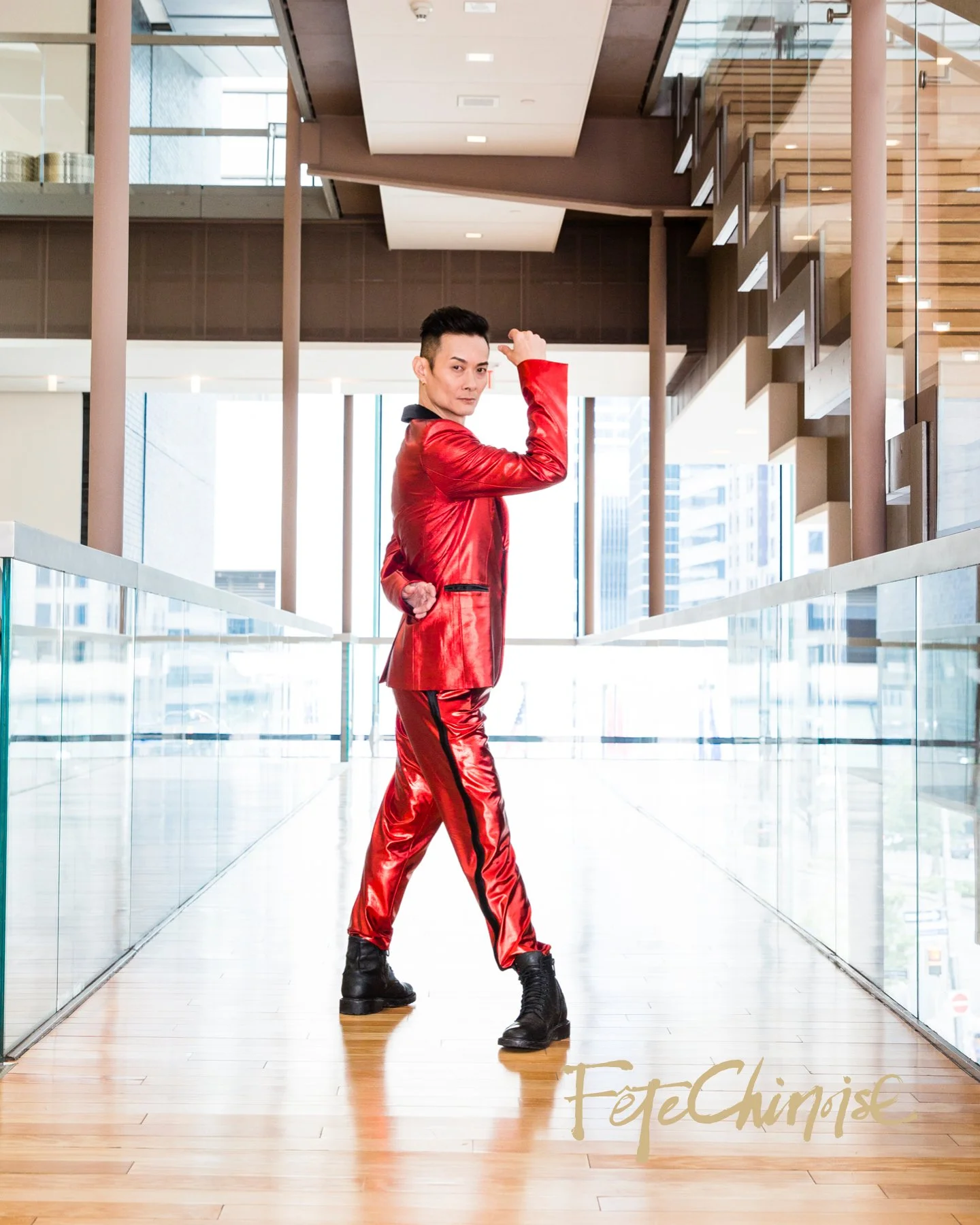
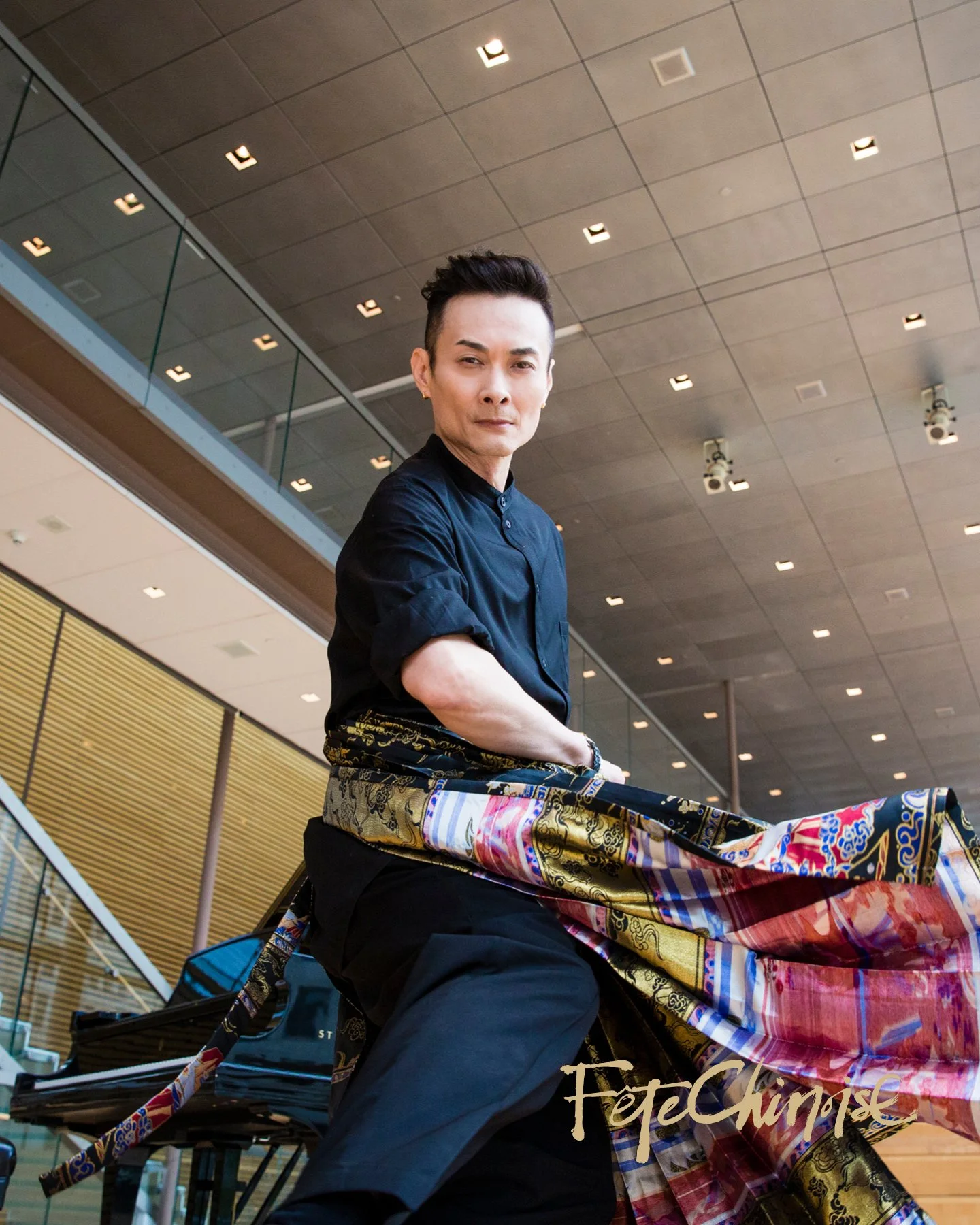
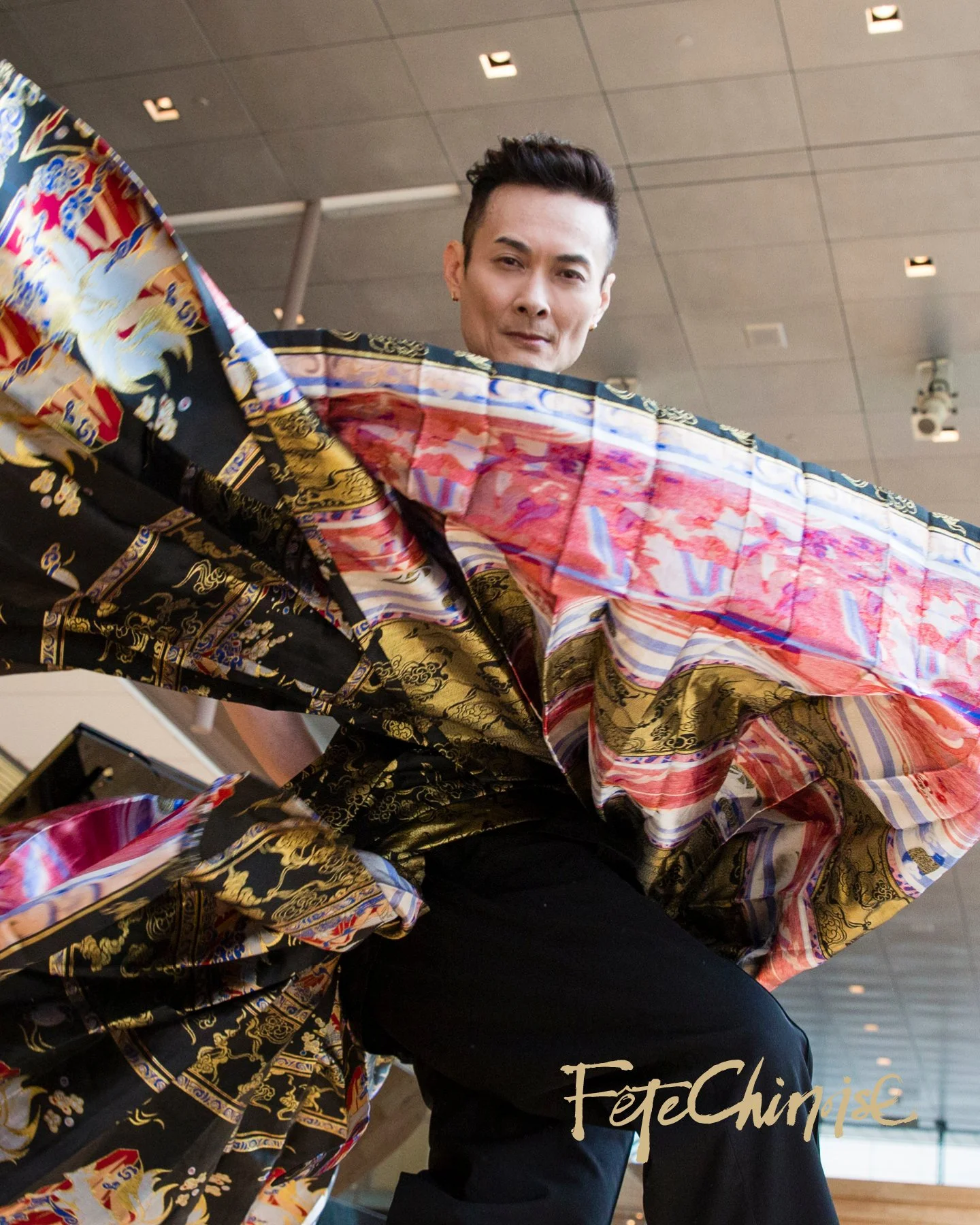
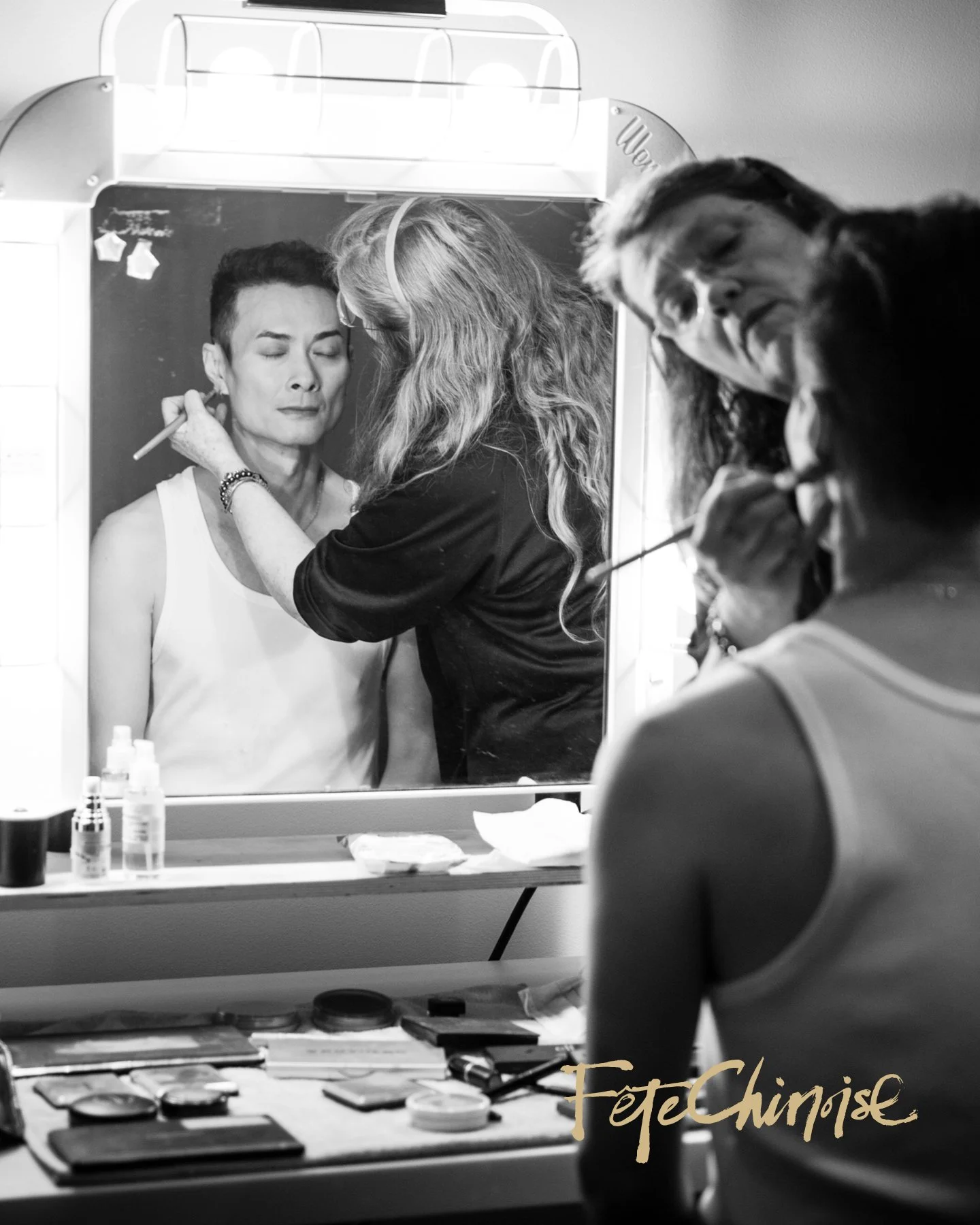
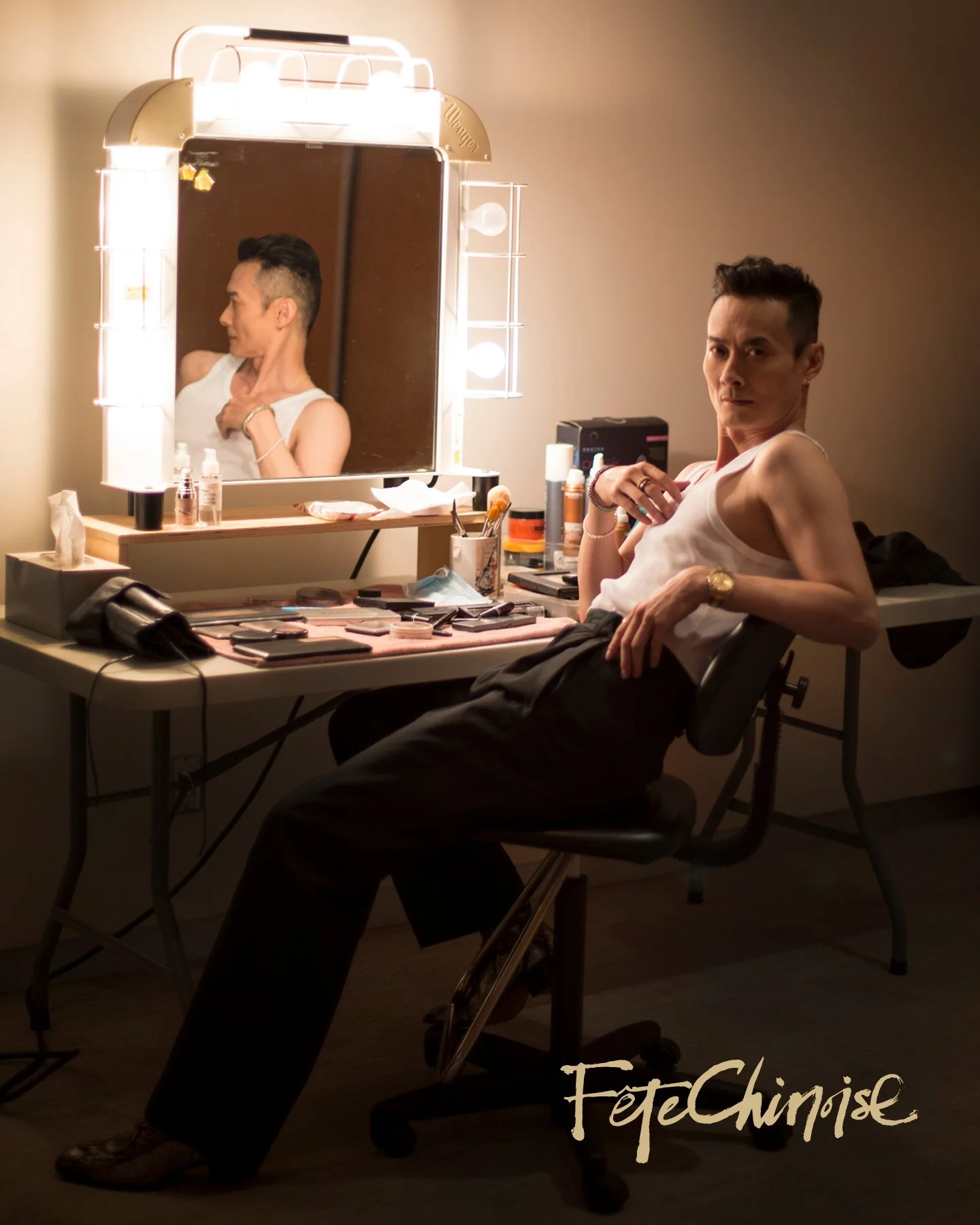

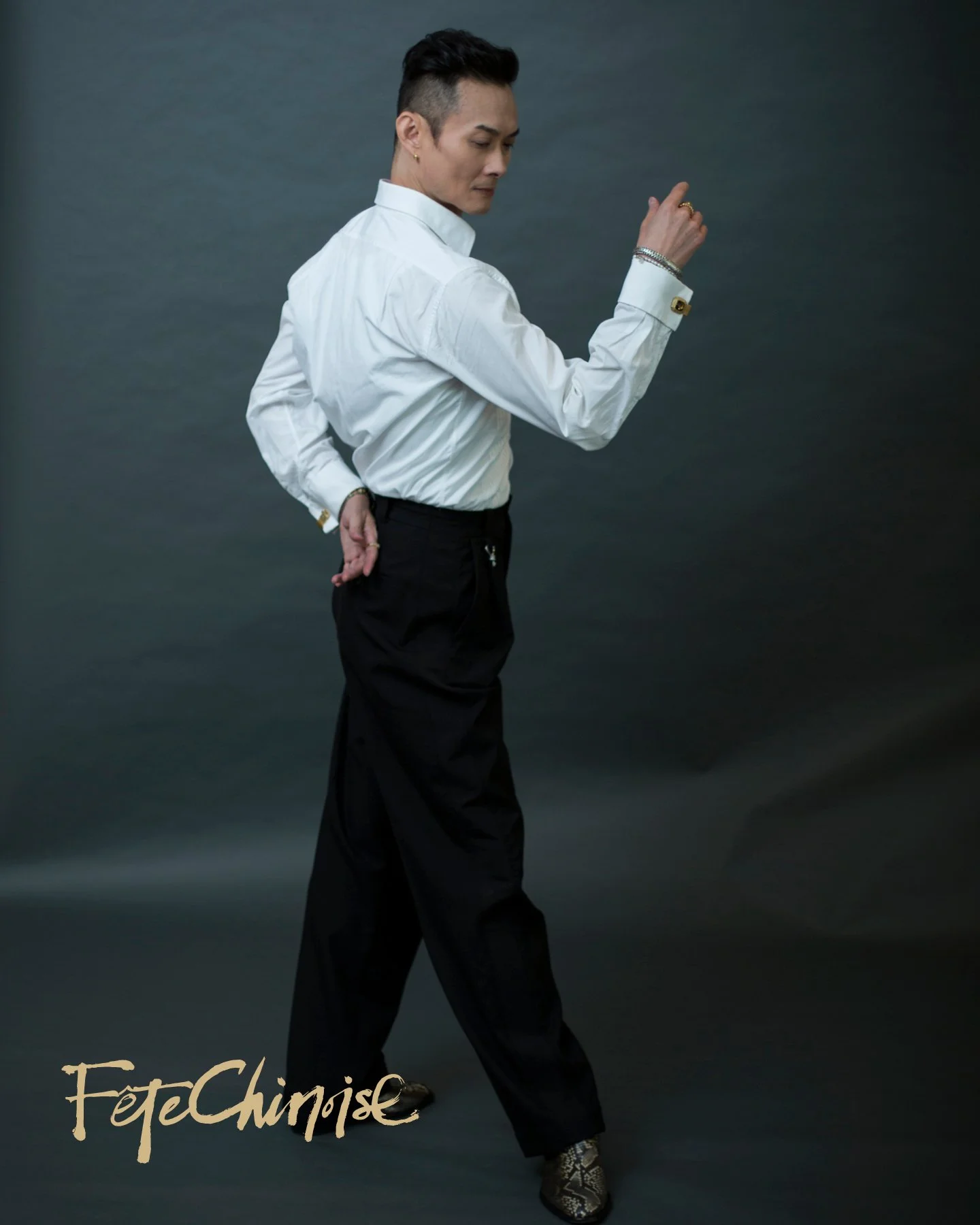

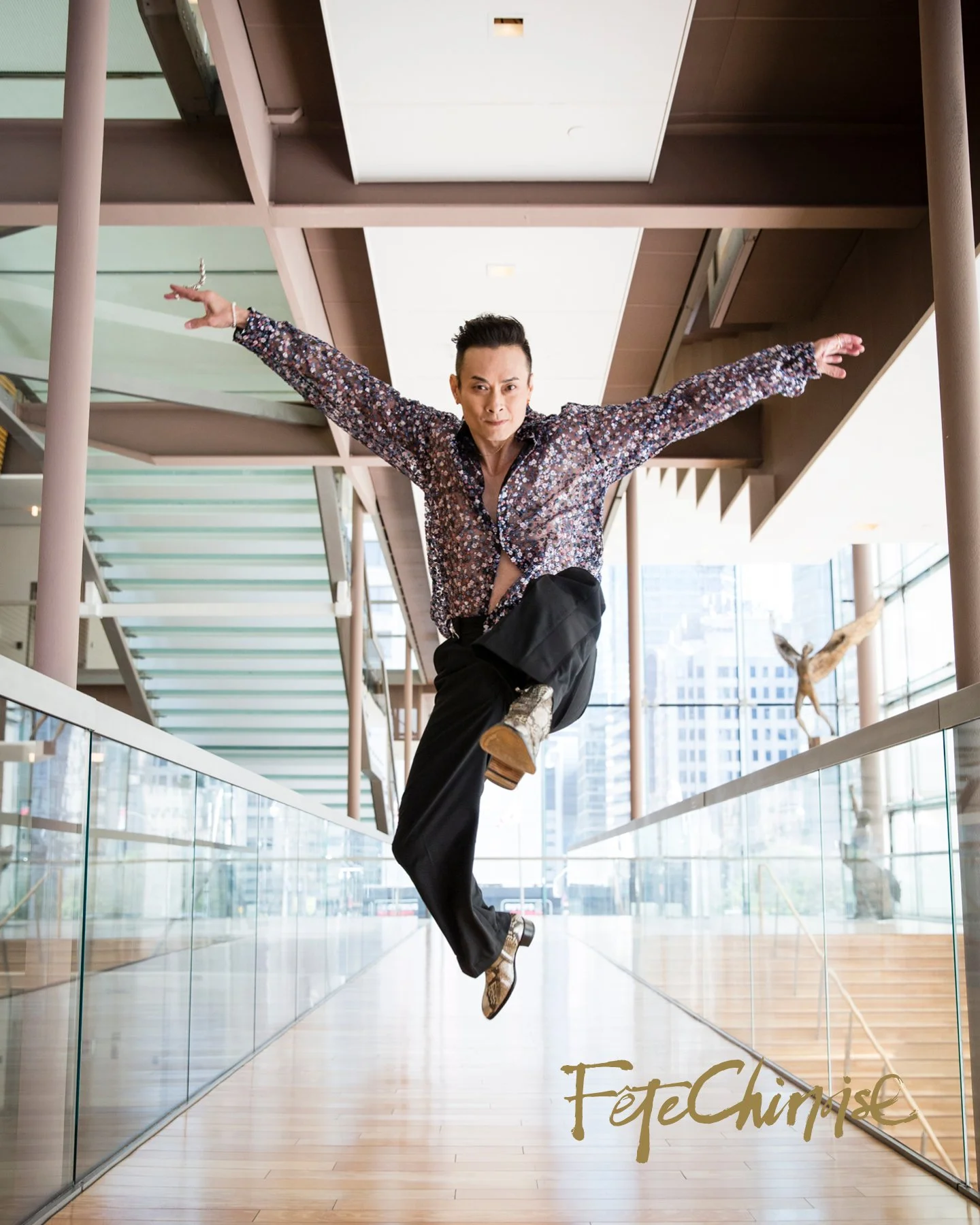



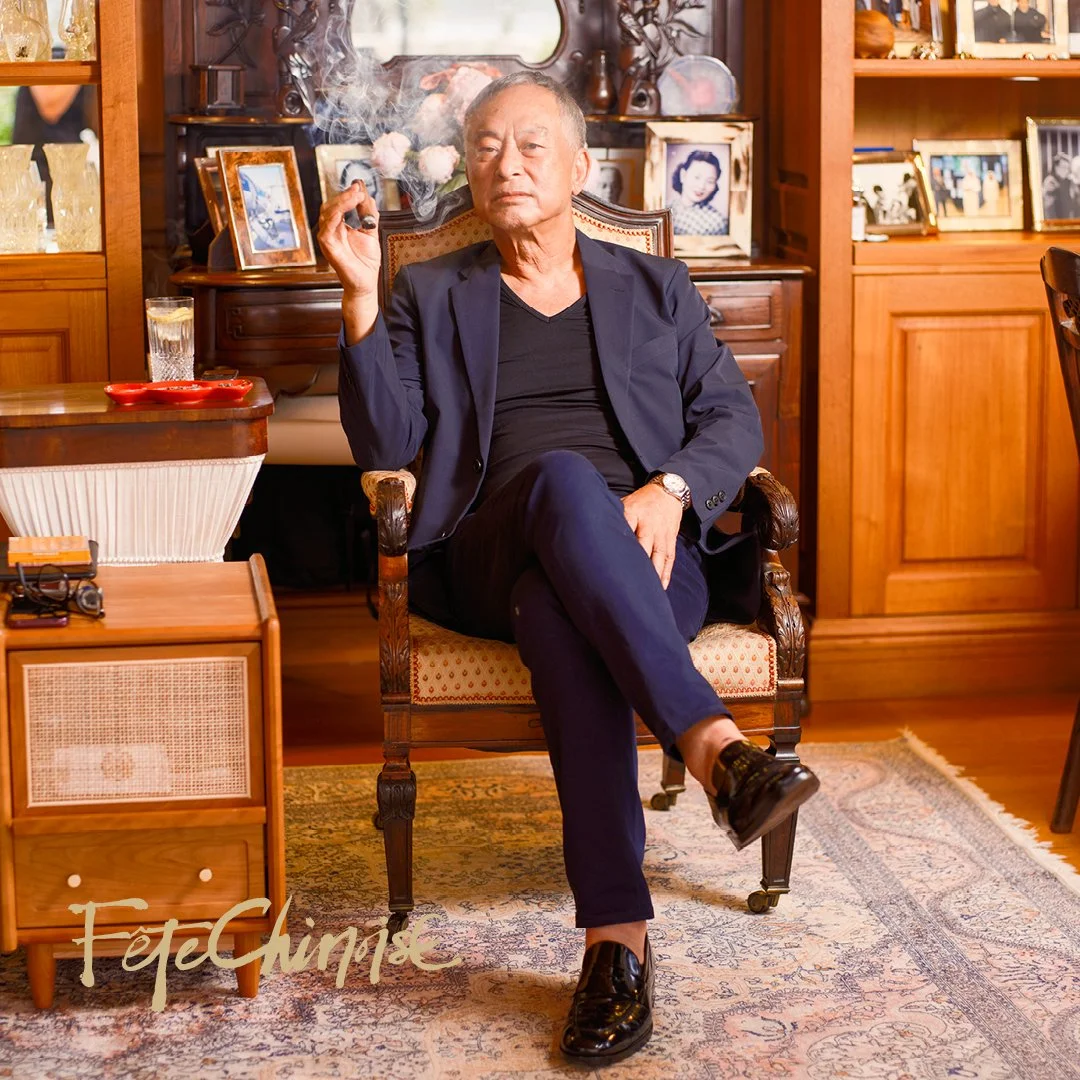
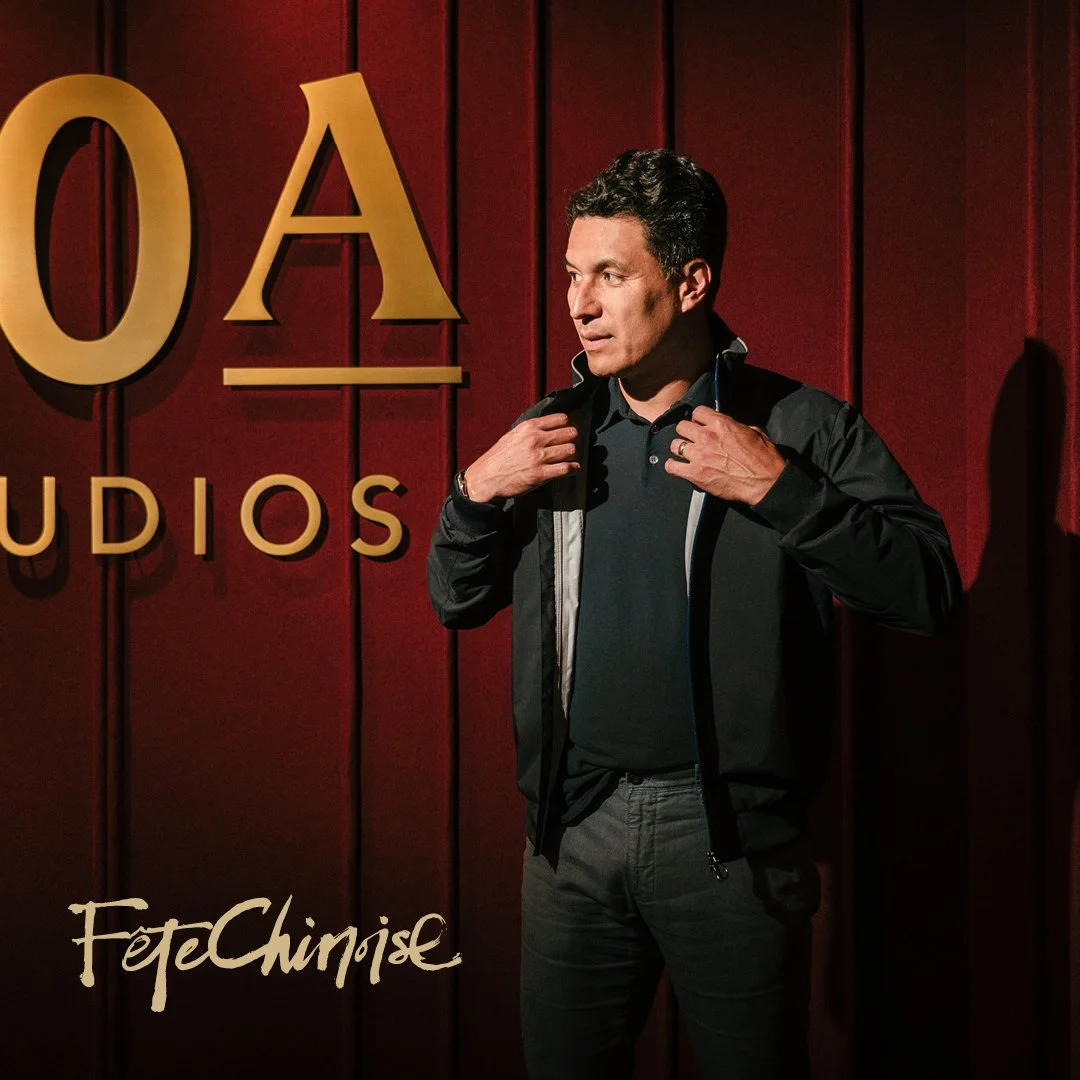
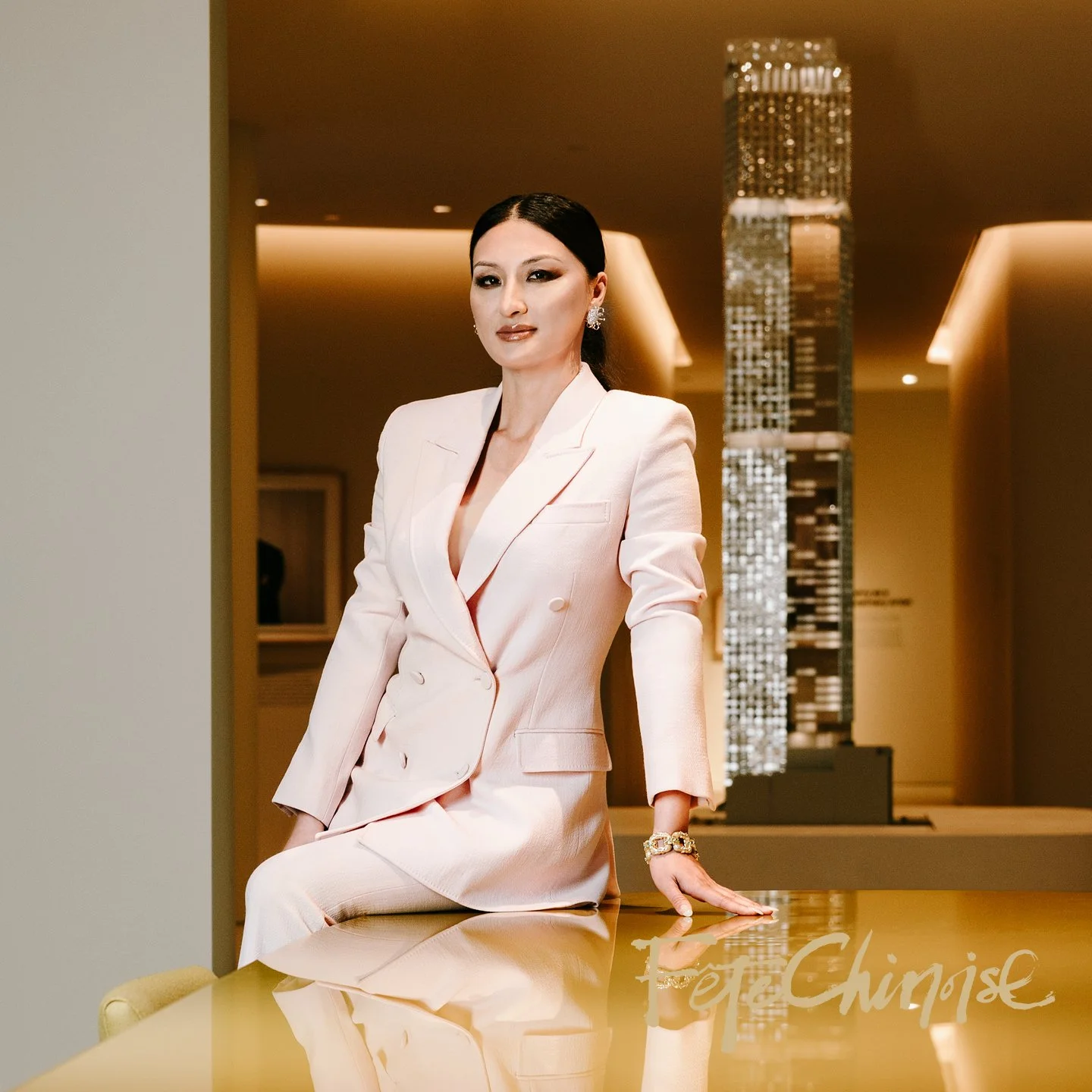






As one of the most influential figures in Canadian banking and the game-changing founder of the Chinese Canadian Youth Athletics Association (CCYAA), Kuo was unraveling the many layers of his multi-faceted identity during our interview for this magazine article. His wife and in-laws are from Hong Kong, his father was originally from China and moved to Taiwan, his mother is Taiwanese, and Kuo himself works here as an all-in Canadian. This unique combination has positioned him well to interact with people from various Chinese backgrounds, blending the East and the West.